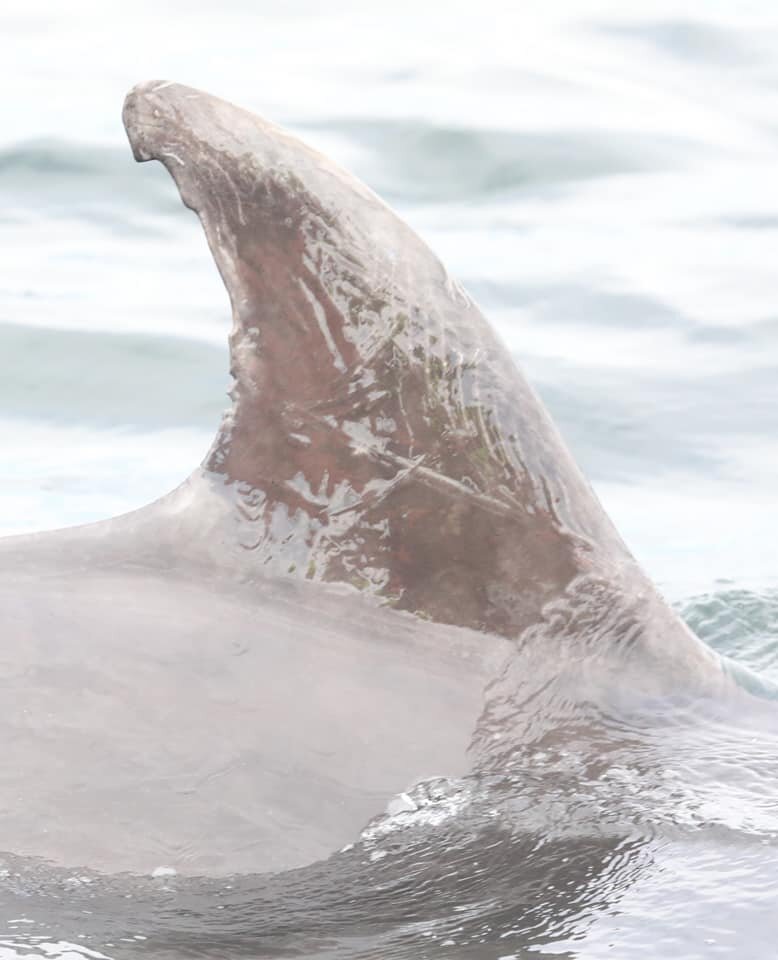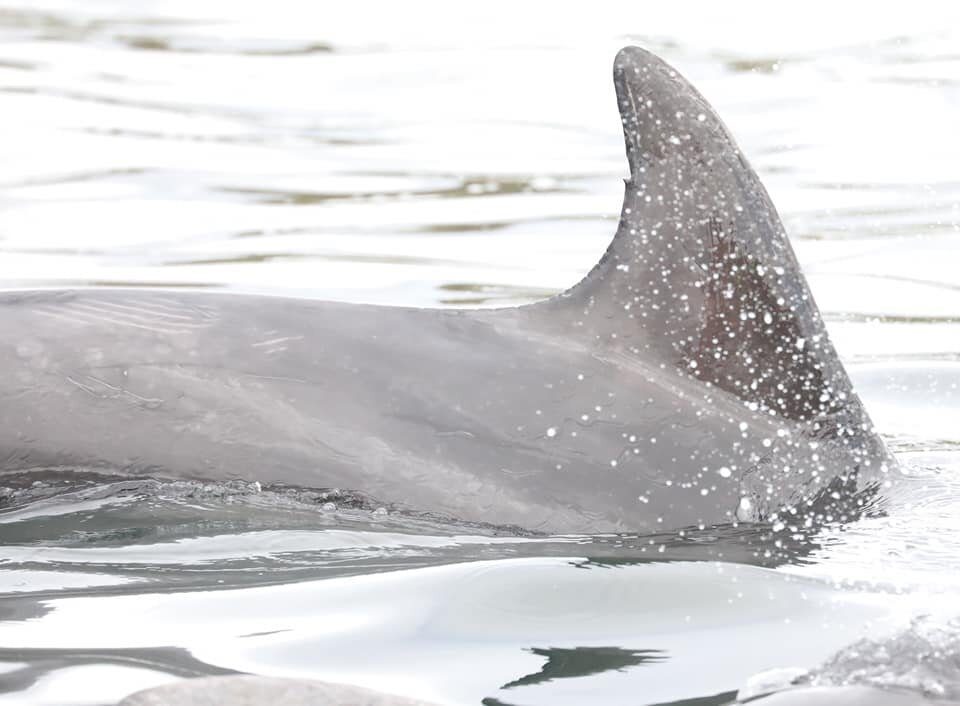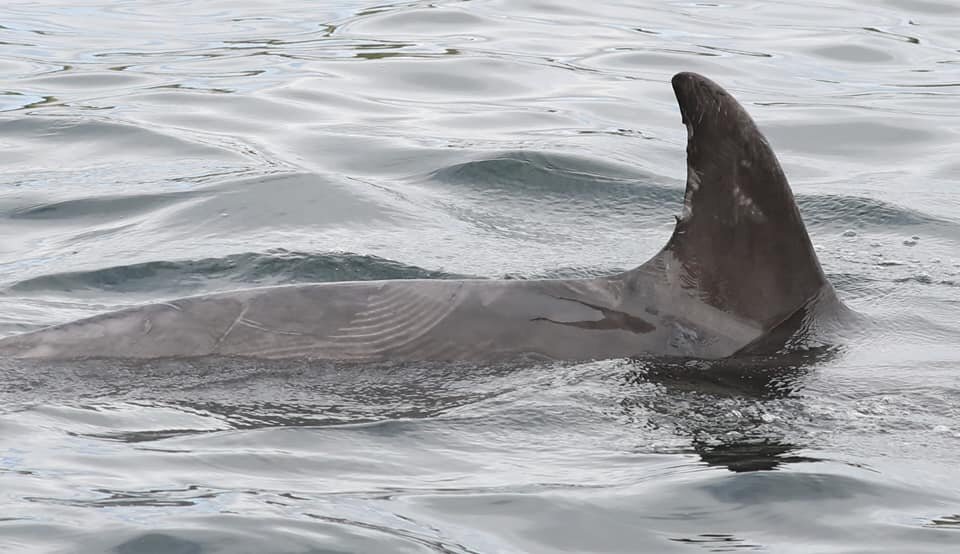Dolphin detective work makes a match!
A bottlenose dolphin breaks the surface in front of our research yacht, Silurian
Bottlenose dolphins seen at Gairloch have been identified as previous visitors to Tobermory Bay!
A group of bottlenose dolphins seen in early June by Hebridean Whale Cruises, who report all sightings made during their trips on Whale Track, have been identified by Rian Harris, our Education and Photo-ID Volunteer.
Skipper, Steve Truluck, captured some amazing photographs of the dolphins’ dorsal fins, clearly showing the unique nicks and markings used to identify individuals. Older dolphins often have marks and scars inflicted by other animals (including rake marks caused by other dolphins’ teeth) which can be used as identifying features to recognise individuals from a population.
“Living on the Moray coast I regularly see the famous Moray Firth bottlenose dolphins, but this was the first time in 2 years of working on the west coast that I saw bottlenose! Thankfully, they stayed in Loch Gairloch all day, giving us 3 wonderful encounters and I managed to get dorsal fin photos of all of the animals to submit to HWDT. It’s fantastic to then get the information back from the scientists, to find out some of their history and to understand more about their movements.”
Comparing Steve’s photos to pictures in our bottlenose dolphin catalogue, we were able to match four dolphins to recorded animals that have visited us right here in Tobermory Bay in 2016 and 2018! And one of the male dolphins spotted during the encounter has been regularly seen in the Hebrides since 2005!
These dolphins are members of the Inner Hebrides community, a group of 30 to 40 animals that are often seen in the waters between the Kintyre peninsula and the Isle of Skye. In 2006, our researchers were the first to suggest that groups of bottlenose dolphins were resident year round on the Scottish west coast. Since then, our data have revealed the west coast of Scotland is home to two separate groups: the Inner Hebrides community and a smaller group of around 15 dolphins, the Sound of Barra community.
FD7010 and FD6035 together in Tobermory Bay last year
“Bottlenose dolphins are one of the species HWDT researches using photo-ID. With a catalogue of photos going back as early as 2001, we can look through our records of known dolphins and work out which individuals are being seen by our amazing community across the Hebrides!
It’s great to be able to tell people about the animals they’ve seen, and every photo helps us learn a little more about Scotland’s cetaceans.”
Photo-identification is a powerful research tool, but the work would not be possible without the contributions made by our community of citizen scientists and local wildlife tour operators. We are extremely grateful to everyone who shares their sightings and photos with us.
Our bottlenose dolphin ID catalogue is currently being updated by Education & Photo-ID Volunteer Rian, and will be released along with our updated minke whale ID catalogue later this year.






